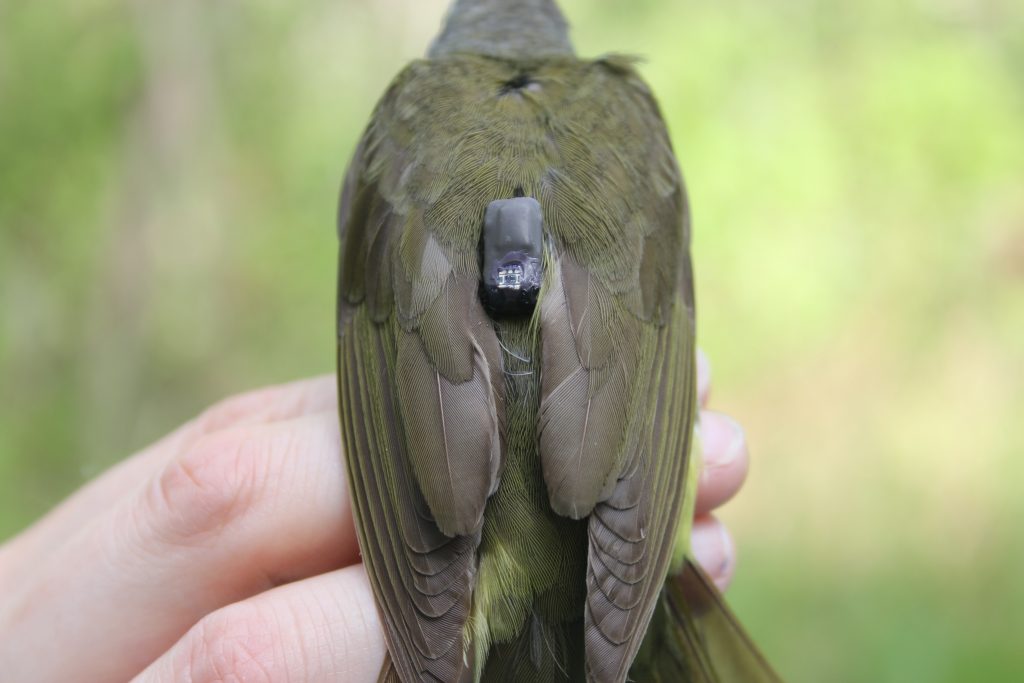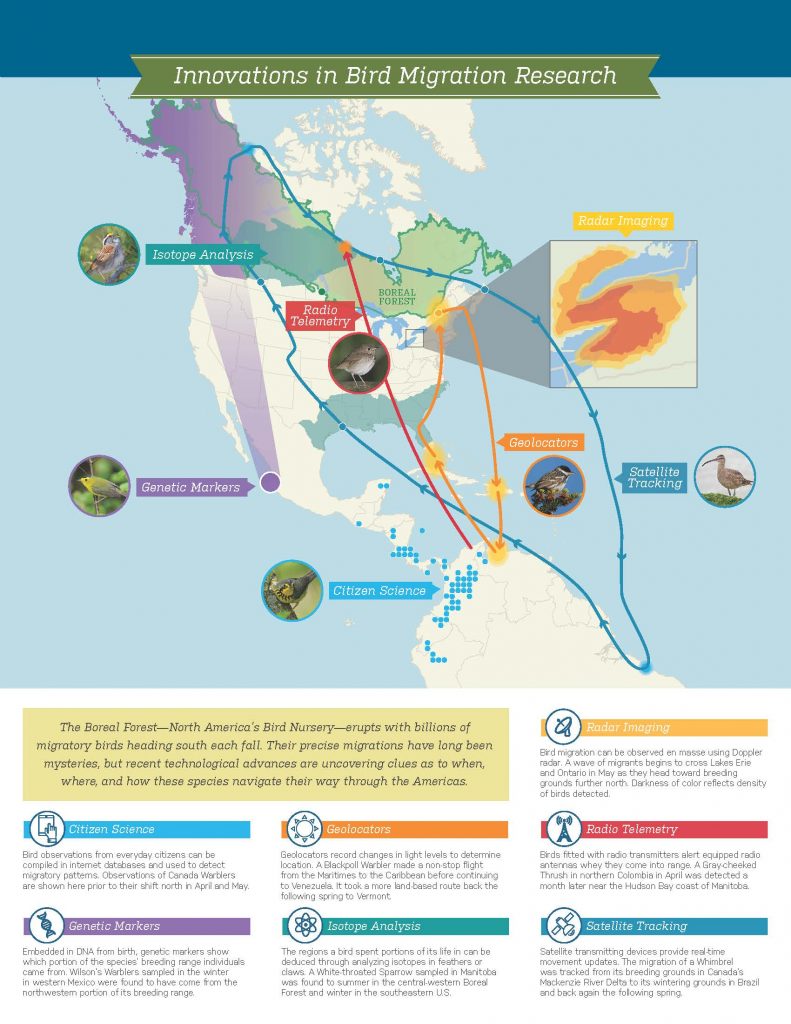Technology is for the birds
Report shows how technological advances track migration and help protect the future of bird species

Technology is a part of our everyday lives. Most of us carry a smartphone that tracks our location. It tells friends and family where we are. It helps us share our story and map our journeys.
Now imagine if lesser scaups could carry smartphones. What would we learn about them?
A new report called Charting a Healthy Future for North America’s Birds takes a closer look at technological advances used to track bird migration. These devices can’t dial out or tweet, but they do help uncover the mysteries of a bird’s international connections.

©Emily McKinnon
The report details how migratory bird movements are tracked through:
- Satellite tracking and geolocators that provide detailed accounts of when and where birds move and where they stop in between;
- Radar and audio sorting technologies that show nocturnal migration and uncover previously unknown rest stops;
- Unique elements ingested in food, referred to as isotopes, that when analyzed helps narrow down where a bird was born or where they spent their winters.
- A piece of a bird’s DNA, called a genetic marker, that provides information about where it was born; and
- Everyday citizens who log their observations through internet-based platforms, helping to identify larger patterns and distribution shifts.

©Boreal Songbird Initiative
The data collected through these technologies is used to generate maps that illustrate the shared wildlife stewardship responsibilities across local, provincial and national communities and decision-makers.
“It quickly becomes clear that the boreal forest is the starting point. It is a vital breeding ground for North American birds,” says Kevin Smith, national manager of boreal programs with DUC.
Between 1-3 billion birds, representing more than 325 species, flock to the boreal each spring to find summer nesting habitat. In the fall, 3-5 billion birds migrate south from the boreal to warmer climates.
“Migratory birds need intact habitats across vast scales to support all of their life cycles,” says Smith.
While the technologies help uncover the mysteries of their international connections, the report further describes new threats and recommendations for protecting the future of bird species and sustaining healthy populations. It calls for:
- Protection for at least 50 per cent of intact boreal ecosystems;
- Land conservation to accommodate Indigenous traditional uses;
- Governments to provide large-scale financial investments for communities to train and hire Indigenous land-use planners; and
- Partnerships that work toward full life-cycle conservation of species.
“Technology increases our knowledge of a bird’s habitat and migration route, and sometimes it’s different than what we previously would expect. This new data, along with all the other values of the boreal forest, is aiding our effort to conserve a billion acres of the forest now so we can all rely on it for future generations,” says Smith.
This report has been prepared in partnership by DUC, Ducks Unlimited Inc., Boreal Songbird Initiative, Environment for the Americas and the Cornell Lab of Ornithology.
Read Chartering a Healthy Future for North Amercia’s Birds, executive summary and view the maps for full details.



